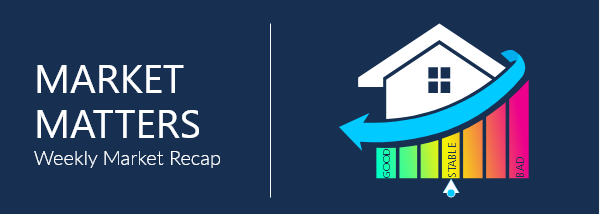Market Matters

This past week we saw both U.S. equities and treasuries find steadier ground than the prior week, as we have less volatility in bonds and specifically in stocks. The same risks are out there that are impacting the market: the presidential election, the virus, U.S.-China trade tensions, and Congress failing to pass round two of a stimulus bill are all still there. This upcoming week the Fed has their two-day FOMC meeting and the market is looking for continued dovishness from the Fed. Fed Chair Powell has yet to disappoint the market with beating dovish expectations, definitely something to keep an eye on Wednesday with the statement and the press conference to follow.
 Initial Jobless Claims
Initial Jobless Claims
Initial Jobless Claims for the week ending September 5th were unchanged at 884k after being upwardly revised in the prior week from the 881k original print. As noted last week, the Department of Labor is using a new seasonal adjustment where they have switched from a ‘multiplicative’ to an ‘additive’ process. In theory, this should lead to a lot less volatility in the weekly claims data ahead, and that looks to already be proving out by today’s results. The 4-week moving average for claims through the week of September 5th declined by roughly -21k to 970k. Continuing claims, which lag by a week, rose +93k to 13.385mln from 13.292mln. This result was disappointing as the previous five weeks have seen a decline; however, continuing claims were at 17.8mln at the end of June, 16.1mln at the end of July, and are now down to 13.4mln.
 PPI
PPI
PPI (Producer Price Index) for August posted up +.3% overall, with the core up +.4% (ex-food and energy). If we also look at the core rate minus trade services, we see a +.3% increase. Looking at the three measures YoY, we see growth rates at -.2%, +.6%, and +.3%, respectively. The final demand goods index was up only +.1% but is now a fourth consecutive increase. The rise for August can be attributed to a +.3% rise in the index for final demand goods ex-food and energy. However, prices for final demand foods fell by -.4%, and energy down -.1%. The index for final demand services rose +.5% in August, which is the same result as in July. In August, two-thirds of the advance can be traced to a +1.2% increase in margins for final demand trade services. The indexes for final demand services less trade, transportation, and warehousing and for final demand transportation and warehousing services also moved up, +.3% and +.2%, respectively. Nearly 20% of the August advance in prices for final demand services is attributable to a +1.1% increase in margins for machinery, equipment, parts, and supplies wholesaling. The indexes for automobiles and automobile parts retailing; truck transportation of freight; food retailing; portfolio management; and securities brokerage, dealing, investment advice, and related services also rose.
 CPI
CPI
CPI (Consumer Price Index) for August increased by +.4% on both headline and core (ex-food and energy) measures. This brings their YoY rates up to +1.3% and +1.7%, respectively. According to the report, a big increase in the index for used cars and trucks, up +5.4%, accounted for over 40% of the core increase. The BLS also mentioned increases in shelter (+.1%), recreation (+.7%), household furnishings and operations (+.9%), apparel (+.6%), motor vehicle insurance (+.5%), and airlines fares (+1.2%). Worth noting, medical care was softer last month, only up +.1%, but is still up +4.5% YoY. If we look outside the core, energy was up +.9%, with rebounds in gasoline (+2.0%), and other fuels (+2.0%). The food and beverages index rose by +.1%, as the food at home index fell another -.1%, and the food away from home rose +.3%. Overall, seems like prices are firming a bit more with demand higher. That said, over the more medium-term, inflation measures are expected to remain modest.
 JOLTS
JOLTS
The JOLTS (Job Openings and Labor Turnover Survey) showed there was 6.618mln job openings on the last day of July. This is an increase of +617k from the upward revised June print of 6.601 (orig. 5.889mln). This was also the third largest one-month increase in the series history. While consecutive increases of more than 10% are encouraging news on labor demand, there seems to be a bit of a disconnect with the hires level. The hires level dropped by 1.183mln in July, which was the largest one-month decline on record. Even though the hires level surged by 3.152mln in May, it is down by 140k since the end of 2019 and down by 1.412mln in just the last two months. The number of job openings now exceeds the number of hires by 1.14 to one, the highest in three months. For comparison, in the last six months of 2019, that ratio averaged 1.19 to one. In other sectors, the quits level rose to 2.949mln in July, a third straight increase following April's 32.7% decline to 1.877mln, the lowest in roughly nine years. It has since risen by 57.1% yet remains 18.4% below its level in July 2019. Between June and July, the job openings rate improved to 4.5% from 4.2% but the hires rate deteriorated to 4.1% from 5.1%. A "healthy" hires rate is considered to be between 3.6% and 3.9%, but also about 1.5 percentage points above the quits rate.

